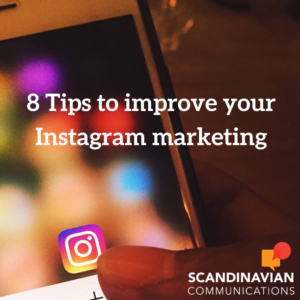
By Christina Rytter, Founder & Crisis Communications Advisor
When crisis or change hits like a bolt from the blue it’s normal for even the most experienced executive to feel concerned. Especially when you want to be at the forefront of things. Here are my Top 5 tips on how you navigate successfully through the storm when a crisis or change hits you in the Scandinavian market:
1. Response quick – but well thought out
A quick response is key in a critical situation, because it gives you the chance to handle and control the situation and thereby the outcome proactively with a higher possibility for success. BUT the quick response must be flanked by carefully thought out communications – especially what key messages you need to deliver in the conversation with your different stakeholders.
Scandinavians are very critical and direct – and we don’t hold back with the questions. This apply to both employees, journalists, clients, business partners and competitors. So, you really need to prepare. I find that one of the most effective ways in crisis and change communications in Scandinavia is to draw up and work with different realistic crisis or change scenarios and plan, what to do and say in each imaginary scenario – and which communications channels will suit your messages and conversations with different internal and external stakeholders best.
2. Get ready for conversation
- What is your key message? Your communication is clearer, when you only focus on one or few key messages.
- Who are you talking to? (Your key target group/stakeholders)
- Which information do the person/stakeholders need?
- Which situation are they in? Communicate the messages relevant to them, not to you.
- Choose your role based on the person/target group. Are you formal or informal? How do you dress? What language and body language do you use? BUT be yourself!
- Prepare, prepare and prepare.
- Train, train and train.
3. Take control over your body language
Your body language is your greatest asset, when you know how to control and use it. When you learn to use your body language proactively combined with clear messages, you can be a brilliant and authentic leader and communicator. BUT if you don’t have your body language under control – and that is quite normal in a crisis or change situation, when you might get nervous – then it can work so much against you, that nobody hears what you say. Well-known international studies show, that up to 80 % of people’s perception of you will be from your body language. That is if you fail to control it. Otherwise people listen. Scandinavian will mostly listen – if it’s not to boring. And if you serve beer (or something stronger for the Finns) they will really listen. 😉.
Control what we see:
- Posture: Straight back and raised head express security, authority and energy.
- Choose a suitable grimace for the occasion; Seriousness, enthusiasm or joy?
- Use gestures that support the message.
- Firm eye contact exudes security and credibility.
- If you avoid eye contact it signals insecurity, uncertainty – and thus untrustworthiness.
- Pay attention to your bad habits and patterns – they especially come out when you are nervous under pressure.
- Look fresh and well-rested (of cause sometimes that might be a little difficult in a crisis).
Control what we hear:
- Deep and calm voicing creates trust and credibility.
- Variation in voice creates dynamism and awareness of the recipient.
- Talk slowly – without getting boring. It exudes heaviness and credibility.
- Breath deep and use (rhetorical) pauses.
4. Keep calm
Even the most experienced executive can get nervous under pressure in a difficult crisis or change situation. That is just human nature.
What happens when you get nervous?
- You protect your body with your arms, turn your back, avoid eye contact, smile stiffly and stave off.
- You sweat, get pale, get ticks, mess with your hair or perform other unconscious bad habits. What are your bad habits under pressure?
- You move uneasily; rocks or turns on the chair. Tilting back and forth on your feet.
- You breathe quickly and superficially.
- You speak faster and get a sharper and lighter voice.
Then what to do?
- Breathe deeply and plant both feet into the floor.
- Lower your talk rate and use (rhetorical) pauses.
- Open your arms, straighten your back and look up and out.
- Make and maintain eye contact – possibly look between the eyes if real eye contact is unpleasant.
- Only smile when it suits the occasion.
- Sit and stand still.
- Choose a chair that stands firm. Otherwise you will quite easy start rocking or turn it.
- If at a presentation: Go consciously among the audience.
- Avoid carbonated water – so you don’t burp (when you breathe quick and superficially).
5. Use the crisis to your advantage
When your response quickly and are well prepared, you can turn the difficult situation into your advantage. By working out a carefully thought out message platform with key messages as a first step. And train through the different scenarios with message- and media training, you can navigate successfully through. Get your Crisis Communications Action Plan in order; Who do you need to communicate to as a first step? When and how? If you handle crisis and change like this, people will understand you much better – and even get on your side. When you keep calm and friendly – and communicate in a clear and authentic way you be at the forefront of things. And as always, the most important thing is to prepare – and train, train, train!
Get free crisis advise and learn more about Crisis Communications
Need help with Crisis Communications in Scandinavia?

